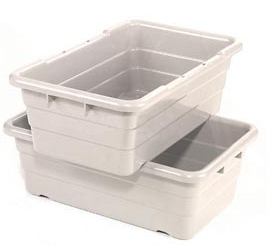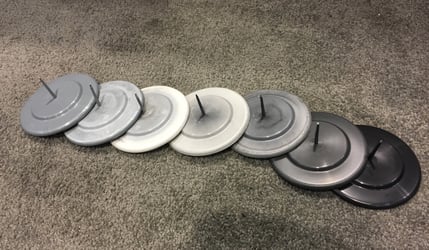
Whether it is new tooling hitting the door, or existing production tools in your plant, you need to monitor the colorant usage. I have seen it over and over again.
When it’s new tooling, parts are produced outside of the plant in a preproduction environment. There are usually several versions of the parts produced before it ever gets the ‘ok’ to move the tool into the plant. Once the tools hit the door and submission parts are produced in house, the colorant has already been adjusted several times. Preproduction parts are produced in the plant on the scheduled production equipment and submitted for approval.
These AAR parts are presented to the customer and either signed off on or rejected. If rejected, the supplier is asked to run the parts again with recommended adjustments. This is sometimes a headache to say the least. Once the signed off parts have been approved, it’s time for production. The colorant supplier has a recommended let down ratio of the colorant.
So now several months later, production is running on that tool on your plant floor. A quality auditor will take a part from the production run and check it either visually to a standard or check it with an X-Rite color machine.
This is where it starts to become an issue. Here are some important questions to ask:
- Has the X-Rite been properly calibrated?
- What has it been calibrated to? Some customers want you to calibrate to a part, whereas others want you to calibrate to a plaque.
- Is the part used to calibrate the X-Rite a AAR part?
- Was the color check done on a flat area of the part?
- Is the color plaque in good condition?
- Has it been kept in a protective sleeve, and how old is the color plaque?
- Has it faded or is it scratched up?
- Is it gloss finish or is it the same grain as the part your checking?
There are so many factors in taking a good color reading that can cause your production floor serious rejects, excessive usage of colorant, or even worse, customer rejects.
One scenario, production is running parts in this new tool at a let-down ratio of 2% colorant. The QA comes by to inspect the parts & takes a hot part right from the injection molding machine. The QA is in a hurry because it’s lunch time. They run and take an X-Rite reading of the part and the reading shows the part is light in color. The QA tells the technician on the floor or the material handler that the part is light in color and rejects all the production. The technician will try to fix the light color by increasing the colorant ratio on the equipment to 4%.
It’s important to remember, hot parts can be lighter and have a lower color reading on the X-Rite. If the part is cooled it will become slightly darker and will probably check out on the X-Rite reading. Also, some colors read red/yellow when hot and will get darker after cooling. Back to the production floor, now that lunch is over and the QA has made it back around to the molding machine for their next check. The QA takes a part that is cool and performs a color reading. Oh no now it’s too dark, and all parts will need to be rejected. All because of a poor X-Rite reading!
Plus, now they ran twice as much colorant on all the production since lunch. Say it was only 2 hours but the part weight is 4 lbs. running a 30 second cycle which equates to money down the drain.
30 sec cycle X 2 hours = 240 pieces X 4 lbs per part = 960 lbs total material
total material colorant used 19.2 lbs @ 2% costing $3.50 lb = $ 67.20.
So long and short, you just wasted $67.20 in 2 hours due to an incorrect color check.
This is what happens when the X-Rite gets calibrated to a bad part or bad plaque over time and now the standard has actually shifted. Parts are produced and molded ahead and inventory of 14,400 pieces were produced, one week of production.
That would be a loss of $4,000.00.
Make sure you are running to the correct let down ratio. Make sure you are calibrating your equipment correctly and often. Put procedures in place and enforce them. How else will you be able to keep your cost down, waste and rejects down, and hold your colorant supplier accountable if something changes in the colorant?
Learn about the importance of implementing proper purging procedures by downloading this free industry guide.








Comments